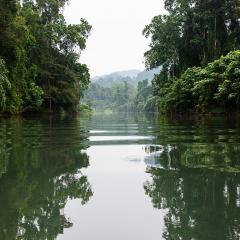Imagine studying to be a surgeon without ever holding a scalpel in your hands or examining a real cadaver? Or how about pursuing a degree in archaeology, yet you haven’t walked across a prehistoric site and probed its ancient secrets through careful and controlled excavation? Although archaeology is amongst the most practical disciplines one could study at university, students need to “go to the field” where they can put years of book-learning, seminars and lab course instruction to use. A real field experience is the “make or break” for archaeology students: you find either that you really love it, or you realise that all the dirt and dust, rain and mud, long hours and close communal living is not for you. What better way to test your resolve than a three-week archaeological excavation in Hawaii?
During this past June and July, Professor Marshall Weisler took 12 eager and enthusiastic undergraduate students to a remote site on the island of Moloka‘i where they camped on a 30 hectare farm (actually, an open paddock) just a short 20 minute walk from the rugged, rocky windward coast—home to the tallest sea cliffs in the world.
Although the Polynesians arrived in Hawaii a millennium ago, it wasn’t until about AD1500 that they frequented this north coast to collect shellfish, urchins, edible seaweed and salt and to visit the numerous stone quarries for obtaining fine-grained rock to fashion into important cutting tools. It is important to realise that in these ancient economies, high-quality stone was as important to them, as gold is to us today.
Numerous house sites, whose ancient stone foundations are clearly visible, are found on hills just inland of the coast, and are associated with family shrines, stone-tool working areas and cook-houses. Students were not only taken on tours of these sites, but interesting geological features were pointed out, as well as the incredible native plants that survive along one of the most pristine coastlines in the Hawaiian Islands.
Field schools must be research-driven as archaeological excavation is destructive and it is unethical to excavate a site without addressing research questions, processing all the finds, and publishing the results. Students were involved with all aspects of the research: they learned how to set-up an excavation unit, carefully excavate through ancient cultural layers, screen the excavated sediments, record finds and, importantly, wash, identify and analyse the excavated materials in the field lab. A great time was had by all.


